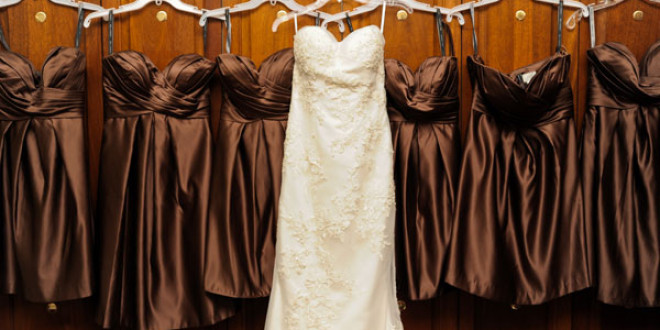[ad_1]
There are several traditional options for the order of events in the wedding processional, all of which are based largely on the religious background of the couple. Keep in mind that it is often acceptable to combine elements from the different traditions to reflect the couple's personality and their personal preferences. Certain officiants and churches may make particular traditional or sacred elements mandatory, make sure you are comfortable with their stipulations before committing to use their services.
Protestant Wedding Processional:
- After the guests are separated there is usually a change in the music, and the grandparents of the couple are attended to their seats by an usher. They are then followed by the groom's mother, accompanied by an usher (or the groom himself), with the groom's father directly behind. An usher generally seats the mother of the bride last.
- The officiant, groom, and groomsmen (if they are not escorting the bridesmaids) enter in an inconspicuous manner, typically from a side door, and take their places at the alter.
- Often after another change in music, the bridesmaids will enter one by one. If preferred, they can be paired with the groomsmen so they enter together.
- When applicable, the ring bearer goes next.
- If there is an isle runner, the ushers lay it out.
- Then, the flower girl (s) walk down the isle.
- After the flower girls have reached the front, the music changes, the guests stand, and the bride and her father proceed to the alter and stop facing the officiant.
- The officiant will ask who gives the bride, to which the father replies "I do" and gives the hand of the bride to the groom, and then takes his seat along with the guests. If the bride's father is not in the ceremony, this verbal affirmation is often excluded.
Catholic Wedding Processional:
- In general, the priest (s) enters through a side door and waits at the alter. The groom and best man follow shortly thereafter and also stand at the alter.
- The groomsmen then escort the bridesmaids down the isle, typically so that the couple furthest away from the alter enter first. If the best man did not enter with the groom, he would escort the maid of honor last.
- The ring bearer enters and is followed by the flower girl (s).
- If the maid of honor did not enter earlier, she would now proceed alone to the alter.
- The bride and her father (or father father figure) then walk up and face the alter, where her father leaves her and finds his seat.
Jewish Wedding Processional:
In a traditional Jewish cemetery, there is actually no wedding processional. In America, it is often acceptable for Jewish couples to choose to participate in version which closely resembles it Protestant and Catholic counterparts. If there is a processional, the wedding participants usually enter in the following order:
- The Rabbi
- The Cantor
- Grandparents of the bride
- Grandparents of the groom
- The groomsman walking paired with other groomsman
- The best man alone
- The groom with his father on his left and his mother on the right
- The bridesmaids paired with other bridesmaids
- The ring bearer
- The flower girl (s)
- The bride with her father on her left and her mother on her right
[ad_2]
Source by Mackenzie Wood

